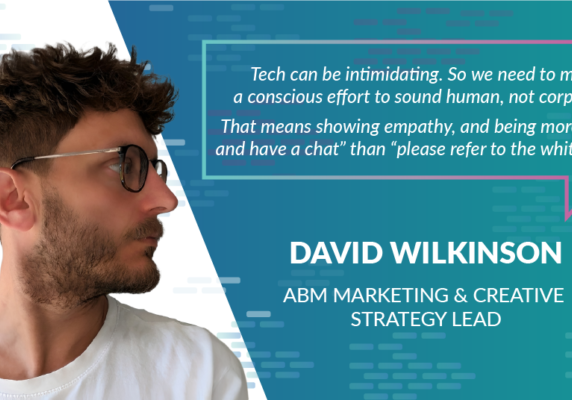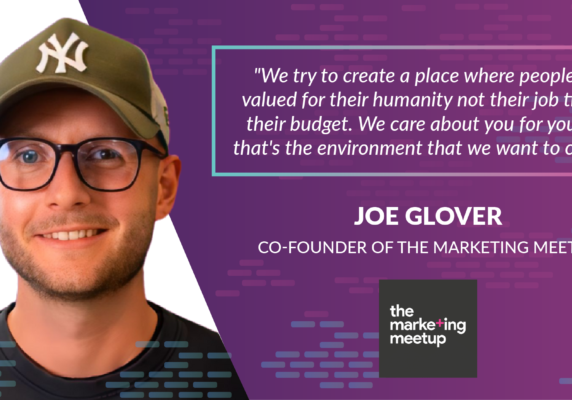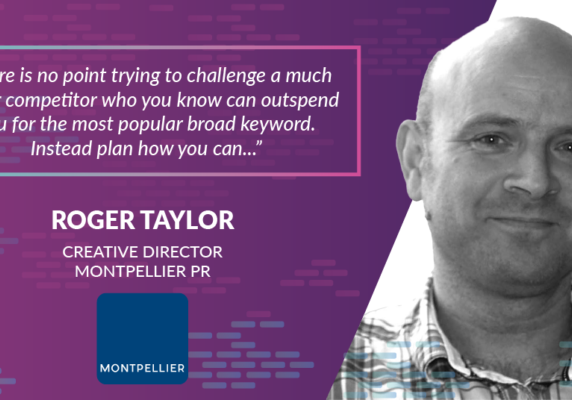B2B Marketing Expert Interviews – Hanns Schempp, Executive Marketing Advisor – Deutsche Telekom
Joining us for our first (of many) B2B Marketing Interview segments is Hanns Schempp, Vice President of B2B Digital Marketing, Europe for Deutsche Telekom.

Please let me begin by thanking you Hanns, for agreeing to take part, we’re very grateful to gain your insight into some of the areas that interest you and your thoughts on these.
As someone with such an extensive understanding with regards to the importance of B2B communication at Deutsche Telekom, do you believe there is a communication-based tool or strategy which is being heavily underused – one that has the potential to be a game-changer?
It is natural to seek the holy grail but there are not normally any ten-word answers to the complexity of the world around us. In B2B communication, there is no single tool or strategy across the industry for all company sizes and the angles they take towards the market.
Depending on market conditions and channel focus in, say, ICT or Smart Cities there is, however, typically an under-use of a combination of tools in large corporations. Take for example marketing automation in social selling to support personalised regional campaigns. Many companies source one or more tools for one or two of those functions. But this is rarely integrated.
Regarding game-changing tools, I do not see any at present. How effectively any contemporary tools can be used very much depends on your strategy. Here, we have very successfully employed distinct commercial-driven business analytics on both our core and growth business, combined with potential-based customer segmentation and social selling.
Many of our readers will be aware of where some of the most influential technology and communication experts/entrepreneurs claim the next significant shift(s) will be for business, how far would you agree that one of these subjects, the rising development in AI spells dramatic change for both industry, communications and services?
AI really seems to be everywhere at the moment. But I would not call its development across the past quarter century dramatic. Indeed, the technology developed rather gradually. What erupted was the development of business cases and AI’s media attractiveness. Also, marketing concepts like personalisation and automation have gradually developed over time. But what has developed dramatically is the way many large corporations are lagging to change mindset, procedures and their organisation as practically required in order to successfully operate AI.
Take communication content personalisation and how this has disrupted traditional end-to-end storytelling. We all know there are replicable properties behind striking target audience curiosities. Yet, no sales managers, journalists, marketers or developers in isolation will be able to identify, let alone make them work.
“…the best advice I can give is valuing and nurturing the huge expertise and independence of your teams.”
In your opinion and drawing on past experience, is it always beneficial to bring PR & Marketing departments closer together – such as forming Integrated Communications teams or is there still merit in having separated departments converge on the same goal simultaneously, but from different directions and using different approaches?
I do not think there is a fundamental case yet for such integration on an organisational level. In specific markets, company sizes and structures there is a very clear case for mindset and process integration. Content factories can produce cleanly geared and timed communication narratives on both angles of storytelling. Yet, driving home both kinds of storytelling still requires distinct tonalities, touchpoints and discussion sequences with expert communities as well as journalists and various types of decision-makers.
The distinct breeds of communicators that this typically creates means that today, they must cooperate much more closely. Shared newsrooms certainly help. But the highly skilled experts needed are also still motivated in very different ways. Not an ideal setting for co-ordinating mutual goals.
“Play is where experience always begins.”
Marketing automation has demonstrated huge benefits to companies but is often reported as underused, leading to poor performance or even failure – how much would you suspect this is down to Marketing not collaborating with PR departments and vice versa?
We all have a pragmatic and individualistic tendency to under-use everything from our mobile phones to our relationships. But the frequent under-use of marketing automation tools is rooted elsewhere in my opinion. It is mostly caused by our traditional reflexes towards market research as opposed to dialogue with heavy users, conflicting goals in corporate IT development and disconnects between marketing mindset, purpose and the need for improving skill sets. Marketing and PR collaboration inspires rather deeper and more experimental marketing automation use. But there are still strong corporate forces and biases in many organisations which seem to divide rather than align them.
With a company’s need to keep the automation machine fuelled with internally created, externally earned, as well as paid-for content—what advice could you offer for how companies can ensure they maintain enough content in reserve?
This comes down to how marketers and PR experts view their current setting and role. You can always be faced with a situation that requires attrition on a high-volume level of communication with opposing players. In the more common down-tempo settings, though, I have found good planning to be the best answer. Think fine-tuning multiple content sources and generation streams, timing and vertical advice on content alongside news and technology cycles or enriching content generation by on-time team-based skill development.
Motivating, coaching and interconnecting leadership plus a solid awareness of industry direction are always required. Yet, the best advice I can give is valuing and nurturing the huge expertise and independence of your teams. Communication stars often combine for fast and deep analysis with pragmatism and interpersonal skills. Nothing could be more instrumental than the linking-up with experts in the field who are essential to keeping stories both accurate and resonant.
Do you think the change or direction being taken by B2B experiential Marketing, takes its cues from the success of B2C experiential campaigns?
Absolutely. Mobile and voice user experience and interface development, technology advancements like virtual reality, augmented reality and machine learning are rooted in B2C. Today, they also score well with many B2B customers. An augmented sensor-driven IoT solution display or animated and interactive, geographic Smart Cities map go a long way in capturing key customer imagination and interest. Increasing video affinity is a great help with B2B customers also, ever since big social media marketing influencers cleared the way for this in the past half decade.
Echoing the previous question, do you expect to see B2B companies eventually throw out the rule book which defines that their audience is reached in an altogether separate/unique fashion to those B2C orientated companies?
Yes. There always were overlaps in the Very Small Enterprise and Small and Medium Business segments. No matter if you have only three employees or a business yet to have a freely, scalable service size: Your thinking about say, an intuitive user guidance solution – aligns with the thoughts of a consumer.
On the other hand: Even large corporations today increasingly focus on narrow vertical markets. To operate cost-efficiently in such markets especially, companies must combine modular standard offerings with only thin layers of customised solutions – the bare minimum required from the B2B perspective to maintain their goals. That said, some differences between B2B and B2C will remain. Emotional brand attachment and the decision-making processes of B2B customers are good examples. The overlap is set to increase, though.
“…[we focus] on steering-as-you-go to stabilise the core business while growing new markets through innovation…”
Can you give an example of where, in your personal experience, a B2B campaign that you were involved with became successful by using a highly personalised experiential Marketing approach? Could you describe the elements that this form of marketing involved which had the greatest positive impact; did any of these initially surprise you?
Table-sized interactive city map displays which allowed users to touch-define areas in a model city and be shown related, potential smart solutions to communal issues. What started with attracting groups of children at first, was followed by experts engaging with our event personnel at one of our 2017 IoT and Smart Cities flagship events. Play is where experience always begins. And it is always intriguing to find new ways of how playing can immerse initial bystanders, bringing them around to your way of thinking and in the process learning from them also.
Multinationals have a wide marketing reach and enough resources to provide them with resilience to weather occasional market downturns but are slow to keep up with adapting to changing business trends – while small companies have the opposite characteristics and traits. How do you successfully make the best of both worlds and apply these to a large company?
It is widely overlooked that large corporations, despite having a wide reach, pay for it with what I call speed and depth. When your prospects or customers realise this, the effects negatively scale in the same way. Which is not something easily excused by investors over a quarterly statement. Also sometimes, a large company’s very reach can be a problem in targeting the right audiences. Even if they really talk to their customers, their marketing teams tend to work in a way that causes them to rarely listen to a generic user of the service in question.
As if this wasn’t enough, their budgeting is also commonly misunderstood: Large corporations often experience significant budget restrictions or fluctuations — despite having the potential to net large revenues. When your corporate planning revolves exclusively around actual revenue monitoring and abstract market analysis, growth requirements easily turn into an almost indecent topic. And that is before even considering that capital markets usually ignore business growth below certain thresholds.
Personally, I balance growth with core business planning by analysing (and discussing) business performance, while simultaneously striving for dedicated innovation funding based on calculated potential revenue. Running managed content marketing streams across few, but constantly tuned digital and social media channels with an agile thinking and acting team is so much easier when this crucial leadership homework has been done.
“360-degree video has the potential of creating a personal level of trust with your audience that is second to none.”
With a large company comes a great wealth of areas which can be affected by even slight changes, how do you manage the introduction of new marketing practices, team organisation and possibly the introduction of new technology to improve performance, without slowing the giant down further?
Another common misconception of large corporations is their alleged fundamental leverage by large customer count and budget size. In fact, from a segment view, this usually attracts the odd department to cushion somewhat against the potential impact of change. Our very different approach focuses, broadly speaking, on steering-as-you-go to stabilise the core business while growing new markets through innovation in what we call blue ocean business. This is a shared goal but we apply dedicated budgets, reporting and return-logic. Over the past years, we have combined local market expertise with more unorthodox methods like social selling on initially defined smaller markets to maintain punch for a core business that comes with no guarantees.
Lastly and slightly off-topic perhaps, but may I ask you for your thoughts surrounding 360-degree video marketing and VR as marketing platforms. Where do you see the greatest advantages or disadvantages of these formats and is there anything that promoters/adopters of these are forgetting to ask themselves?
360-degree video marketing will gain even more ground in the near future, along with employee engagement and virtual reality. 360-degree video has the potential of creating a personal level of trust with your audience that is second-to-none. But, of course, this only works if the embedded content connects with the right, decision-makers or audience groups.
Also, in today’s media clutter, marketers more than ever, need to factor in the right moment to reach out to their target in order to best enable that person to communicate their experience across their own organisation. Which just goes to show how human scale and touch in B2B should always be thought of and executed end-to-end rather than being merely an attractive theme.






